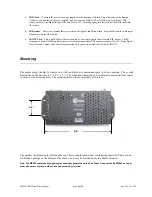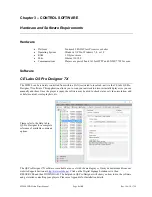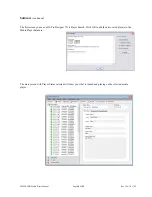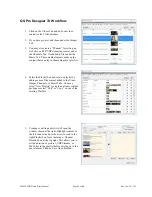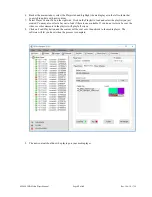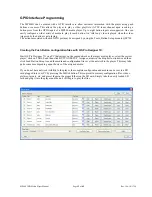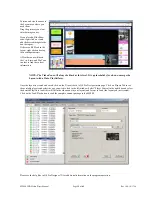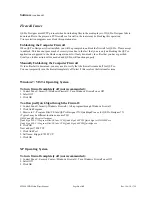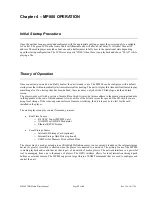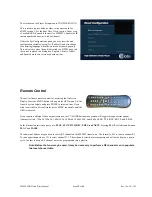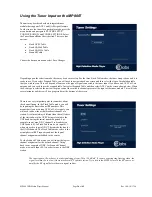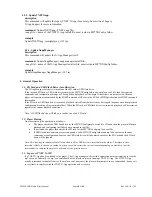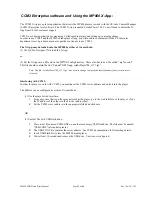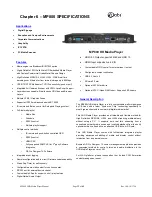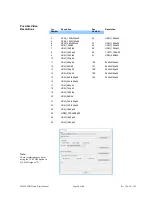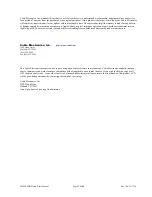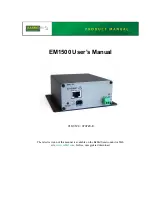
MP800 UHD Media Player Manual
Page
22
of
45
Rev. 100- 10/17/16
Chapter 4
– MP800 OPERATION
Initial Startup Procedure
Once the unit has been mounted and configured with the appropriate cabling, connect the power supply to a suitable
AC outlet. The green LCD on the front of unit will illuminate and will after a brief delay; it will show the unit IP
address. The media player may take about one and a half minutes to fully boot to the operational state depending
upon the startup configuration. The LCD screen reports “IDLE” when there is no playback and shows “PLAY” while
playing a file.
Theory of Operation
Once connected, powered on, and fully booted, the unit is ready to use. The MP800 can be configured with a default
startup item that will automatically start immediately after booting. The unit will play this item until instructed to play
something else. If no startup item has been defined, the screen may only show the CE labs logo and then a black
screen.
The player works well with a variety of media files at high bit rates, but please adhere to the media creation standards
in the appendix at the end of this document. Also, be aware of the bit rate versus the speed of the SD card if you are
using local storage. If the video experiences freeze frames or stuttering, the bit rate may be too fast for the card
installed in the player.
The media player can play content from many sources:
Real Time Source
o
RF ATSC Tuner (MP800T only)
o
QAM HD or UHD RF Modulator
o
Ethernet RTP IP Stream
Local Storage Source
o
Internal SD Storage Card (optional)
o
Internal Storage Hard Drive (optional)
o
USB Port for Memory Stick or Hard Drive
The player may be used as a stand-alone Ultra-High Definition source (once content is loaded on the internal storage
device) or greater versatility is allowed when the player is connected to a network. The primary focus of the MP800
is media playback and control device that is part of a network of media players. The network interface is a powerful
tool in managing from one to thousands of players. The GPIO interface allows for local interaction through push
buttons or external sensors. The MP800 supports a large library of SNMP commands that are used to configure and
control the unit.

